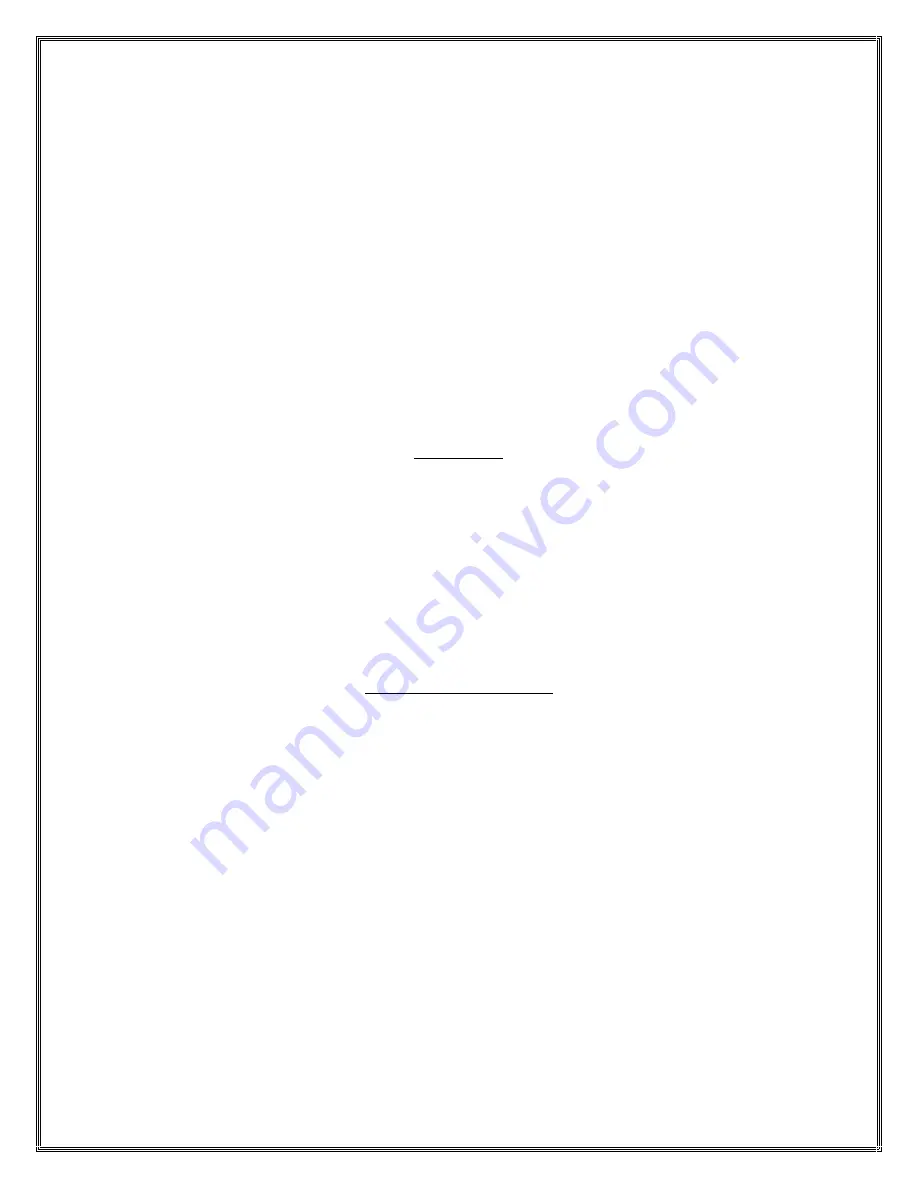
INSTALLATION, OPERATING AND TROUBLESHOOTING INSTRUCTIONS FOR MODEL E12
Page 6 of 20
INSTALLATION AND OPERATING INSTRUCTIONS
FOR THE
LaMARCHE E12 CONSTAVOLT® FLOAT BATTERY CHARGERS
The Constavolt® Float Rectifier is designed to operate on a specific number of cells. The nameplate on
the charger indicates the type and number of cells required. Once properly installed and adjusted, the
rectifier should maintain the battery in a fully charged condition. Install the rectifier so that the flow of
air through the ventilators is not obstructed. Binding posts with wire lug connectors are provided within
the unit, for the AC & DC connections.
To operate the charger, connect the AC power to the terminals marked "AC INPUT". Connect the battery
to the terminals marked "DC OUTPUT". Connect the DC load to the terminals marked "DC OUTPUT" or
"LOAD". Before connecting the AC power, loads, or battery leads, observe the proper polarity, and be
sure that the battery type, number of cells, and the AC input agree with the nameplate data.
Note: Customer to provide AC Input protection on 208Vac or 240Vac units.
OPERATION
Upon installation, the desired float/equalize voltage may be obtained by adjusting the potentiometers on
the front of the unit. (See ADJUSTMENTS) The charger will charge to its maximum rate and taper to a
trickle charge when the battery reaches its float voltage. Check the battery manufacturers specification
for the proper float, equalize voltage setting and equalize cycle.
When a battery is discharged or standing idle, the battery voltage will be less than the float or equalize
voltage. Therefore, when the charger is put into operation, it will immediately begin to charge the
battery. The charger will charge the battery at its rated output to a predetermined setting. It is
necessary to trickle charge the battery at a very low rate in order to keep the battery fully charged.
Therefore, after the charge has brought the battery to full charge, it shuts down to a small continuous
charge preserving charge.
CHARGER COMPONENTS
The charger has four (4) basic components: a transformer, saturable reactor, silicon rectifier stacks, and
control unit. The basic operation of these units is as follows:
The transformer transforms the incoming AC voltage to the required level to charge the battery. The
transformer also isolates the incoming power from the output. The saturable reactor regulates the power
output of the transformer continuously over the charge cycle. The rectifier stacks are made up of silicon
diodes to rectify the secondary AC power to DC power. The control senses the condition of the battery
and controls the reactor, which in turn regulates the power output of the transformer.
The standard float charger is provided with a potentiometers for adjusting the float and equalizing
voltage level and a float/equalize switch for transferring the output of the charger from float charge to
equalize charge.




















